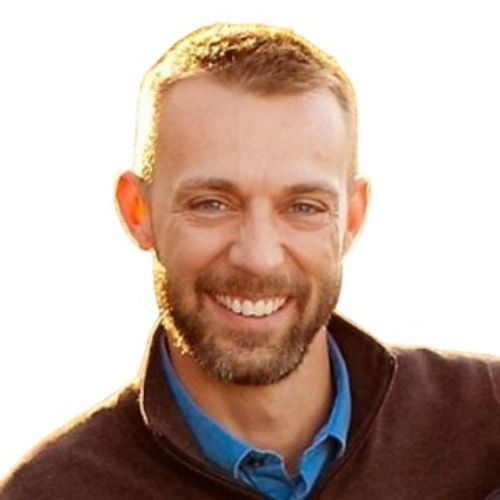Episode 425
#425: The "Front End" of Medical Device Innovation: From Idea to Market
This episode with Stuart Grant of Archetype MedTech demystifies the "front end of innovation," a critical yet often overlooked phase of medical device development. Stuart, a seasoned MedTech veteran with over two decades of experience at Johnson & Johnson, shares insights from his doctoral research on this topic. He breaks down the process, defining the front end as the crucial period between applied science and new product development, where teams identify unmet clinical needs and shape a product concept. This conversation offers a clear roadmap for balancing creativity with structure, using the Design Council's Double Diamond model and Stuart’s 10 key insights for observing user behavior.
Stuart Grant’s discussion on the front end of innovation highlights the importance of deeply understanding the user and the environment in which a device will be used. He introduces a number of tools and techniques, such as the Pugh Matrix and the NVivo software, to help teams transition from a broad exploration of ideas to a focused, viable product concept. Stuart explains that while the front end may seem "fuzzy," it can be a systematic process that uncovers the true clinical and market needs that will determine a product's success. He emphasizes that the most successful devices aren't just incrementally better, but are born from a deep understanding of customer insights.
This episode is an essential guide for anyone involved in MedTech innovation, from academic researchers to seasoned engineers. Stuart's insights challenge the conventional reliance on key opinion leaders and provide a framework for a more holistic, user-centric approach. He outlines how to identify and interpret subtle user behaviors, from workarounds and unconventional uses to unspoken frustrations, all of which are critical for developing a truly impactful and user-friendly medical device. Whether you're at the very beginning of a project or looking to improve your current innovation process, this episode provides actionable strategies to bridge the gap between a great idea and a marketable product.
Key Timestamps
- (2:00) Defining the "Front End": Stuart explains what the front end of innovation is and why its name has evolved from the "fuzzy front end."
- (8:00) The Double Diamond Model: An explanation of the UK Design Council's Double Diamond, illustrating the divergent and convergent phases of problem-solving.
- (12:30) Common Pitfalls: Discussing the three critical questions to answer: Is there a market (viability)? Is the technology possible (feasibility)? Do users want it (desirability)?
- (15:00) Balancing Creativity and Structure: The roles of different team members and how to manage the creative (divergent) and critical (convergent) phases of innovation.
- (21:00) 10 Ways to Find User Insights: Stuart breaks down the specific techniques and red flags to look for when observing users, including workarounds, affordances, and areas of disjuncture.
- (26:00) The Problem with KOLs: Why relying solely on key opinion leaders can be a mistake and the importance of observing a wider range of users.
- (30:00) Triggers of Use: How unconventional uses of a device can reveal new product opportunities.
Standout Quotes
"A craftsman will build you exactly what you ask for. An artist will build you what you didn't know you need." - Etienne Nichols
"You don't just do what the customer says because that could lead to a terrible product." - Stuart Grant
Takeaways
- Observation is Key: Go beyond interviews. The most valuable insights come from observing users in their natural environment, such as a surgeon in the operating room. Pay attention to "workarounds" or unconventional uses, as these often reveal critical unmet needs.
- Balance Divergence and Convergence: Use a structured approach like the Design Council's Double Diamond to manage the innovation process. Start with a broad, creative phase to gather information and ideas (divergence), then narrow down and refine them into a concrete solution (convergence).
- Assemble a Diverse Team: The best innovation teams include a mix of skill sets, from engineers and designers to marketers and clinical representatives. Each function plays a critical role in controlling the process and ensuring the product is viable from multiple perspectives.
- Look for Disjuncture: Be on the lookout for inconsistencies between what a user says and what they actually do. This "disjuncture" can reveal hidden pain points and lead to profound insights that others might miss.
- Don't Over-Rely on KOLs: While key opinion leaders offer valuable expertise, their extensive experience can cause them to overlook usability issues that affect the majority of users. Include a diverse range of users in your research to ensure your product is accessible and effective for the broader market.
References
- Design Council Double Diamond: A visual representation of the design process, emphasizing phases of divergent and convergent thinking.
- Donald Norman, "The Design of Everyday Things": A foundational book on human-centered design, which discusses concepts like affordances.
- Pugh Matrix: A tool used to compare and evaluate multiple design concepts against a set of criteria.
- Etienne Nichols's LinkedIn Profile
MedTech 101: The Double Diamond
Imagine you have a new idea for a medical device. Where do you start? The Double Diamond model is a simple but powerful framework to guide you. Think of the first diamond as the "problem space." You start by diverging, or expanding your view, to explore every angle of a problem. This is like brainstorming—you collect a wide range of information about the user, the environment, and the clinical need without judgment. Then, you converge on a single, clear problem statement.
The second diamond is the "solution space." You diverge again, this time to come up with many different ideas and concepts to solve the problem you've defined. You're thinking creatively about all the possible solutions. Finally, you converge one last time to select and refine the best solution, turning it into a concrete product concept. This process ensures you're not just solving a surface-level issue but a real, well-defined problem with a well-considered solution.
Feedback Call-to-Action
What are your thoughts on the "front end" of innovation? Have you experienced any of the user insights Stuart discussed? We'd love to hear your stories and questions. Email us at podcast@greenlight.guru with your feedback or to suggest a topic for a future episode. We read every email and will respond to you personally.
Sponsors
This episode is brought to you by Greenlight Guru, the only medical device success platform designed specifically for MedTech companies. Their MedTech Suite, including both QMS & EDC solutions, is built to address the unique challenges of medical device product development and quality management. Just as Stuart Grant highlighted the importance of a structured process to go from an idea to a marketable product, Greenlight Guru helps you manage that entire journey with purpose-built software. To learn how Greenlight Guru can help you navigate the entire product lifecycle, visit www.greenlight.guru.

